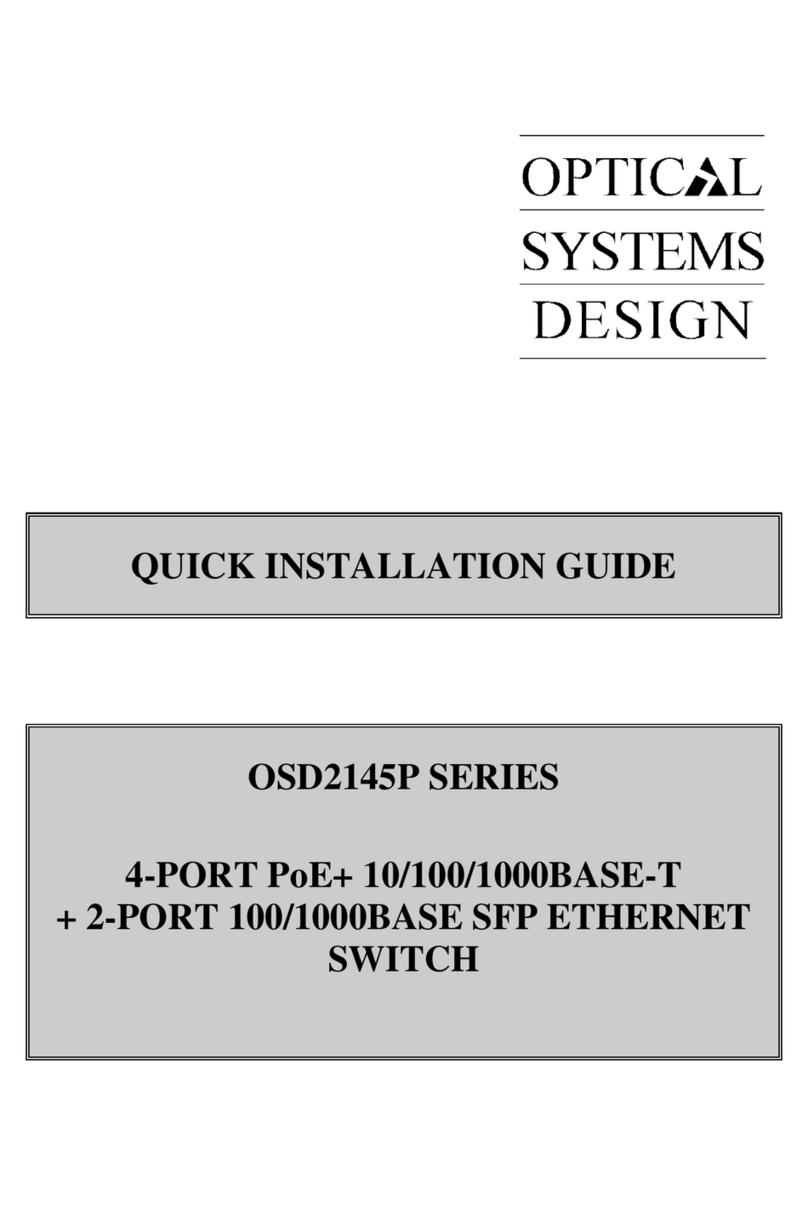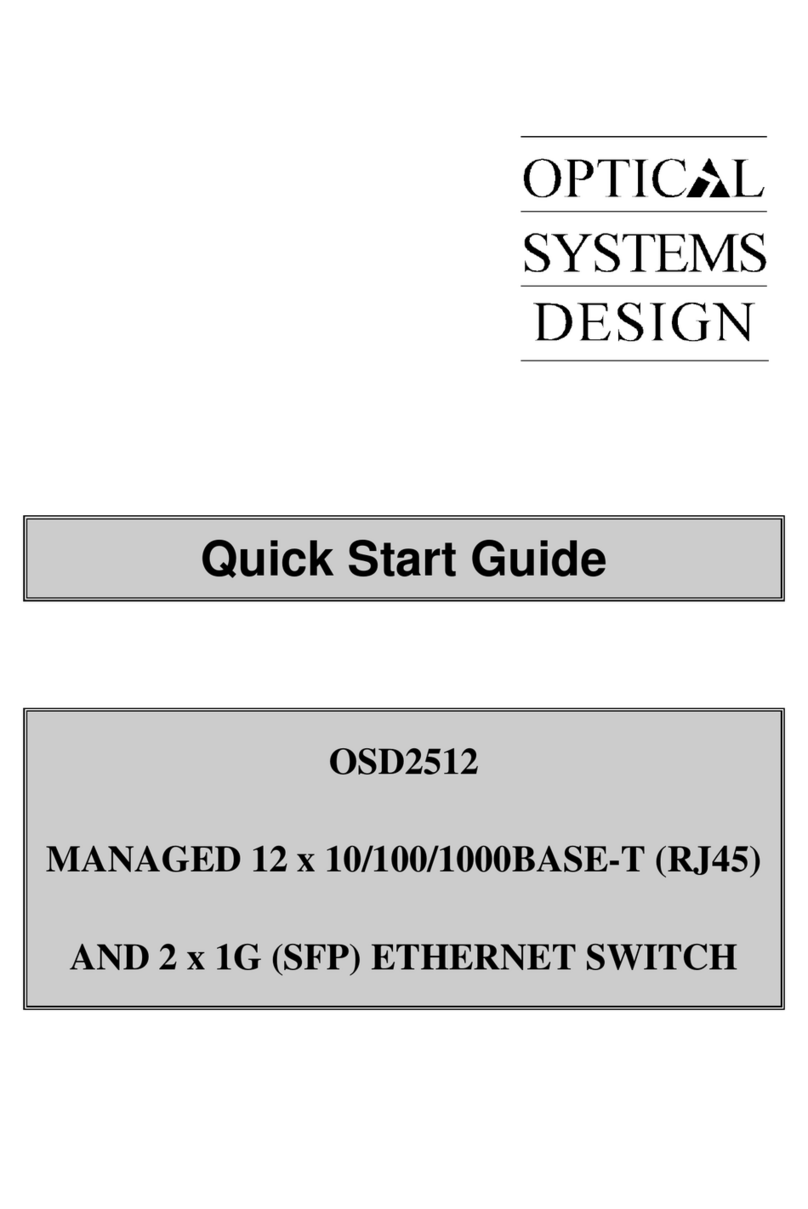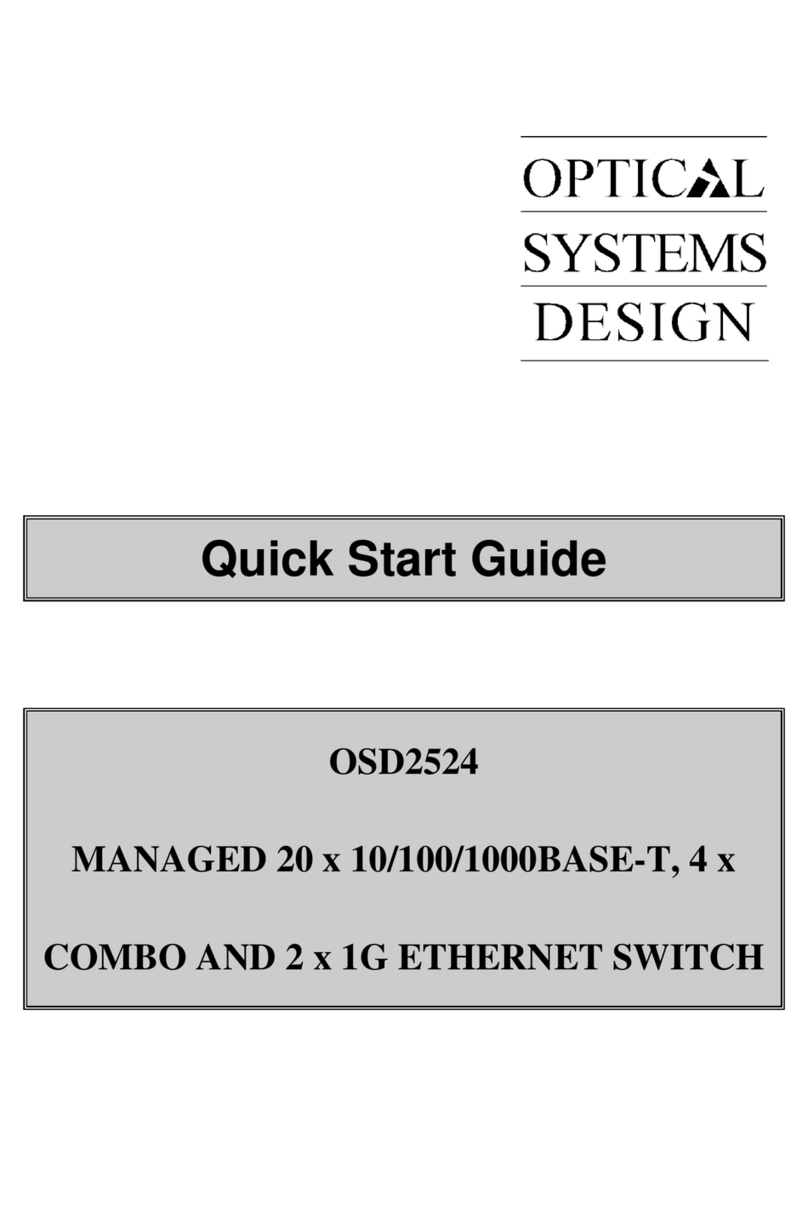
OPTICAL SYSTEMS DESIGN
DOC ID: 10119701
OSD2258 OPERATOR MANUAL
PAGE 3
INDEX 1
1
TECHNICAL SUMMARY........................................................................................................ 5
1.1
BRIEF
DESCRIPTION ............................................................................................................ 5
1.1.1
OVERVIEW............................................................................................................................................. 5
1.1.2
APPLICATIONS...................................................................................................................................... 6
1.1.3
FEATURES AND BENEFITS................................................................................................................. 6
1.2
TECHNICAL
SPECIFICATIONS ........................................................................................... 7
1.3
PORT
ALLOCATION ............................................................................................................. 8
2
INSTALLATION AND OPERATION................................................................................... 10
2.1
INTRODUCTION .................................................................................................................. 10
2.2
INSTALLATION ................................................................................................................... 10
2.2.1
WARNING AND PRECAUTIONS....................................................................................................... 10
2.2.2
DRAWINGS AND DIMENSIONS ....................................................................................................... 11
2.2.3
LOCATION ........................................................................................................................................... 12
2.2.4
POWER SUPPLY CONNECTIONS ..................................................................................................... 12
2.2.5
ALARM CONNECTION....................................................................................................................... 13
2.2.6
USB CONNECTOR............................................................................................................................... 14
2.2.7
LED INDICATORS ............................................................................................................................... 15
2.2.8
CONTROLS........................................................................................................................................... 16
2.2.9
FITTING SFP CONNECTORS ............................................................................................................. 18
2.3
OPERATION.......................................................................................................................... 19
2.3.1
CONNECTIONS.................................................................................................................................... 19
2.4
M
INI
USB
P
ORT
...................................................................................................................... 21
2.5
T
YPE
-B
USB
PORT ................................................................................................................ 21
2.6
COMMAND
LINE
INTERFACE .......................................................................................... 22
2.6.1
TERMINAL EMULATION SETUP...................................................................................................... 22
2.6.2
COMMAND LINE FUNCTIONS ......................................................................................................... 23
2.7
WEB
GUI ............................................................................................................................... 36
2.7.1
LOGGING ON TO THE SWITCH........................................................................................................ 37
2.7.2
GUI MENU ............................................................................................................................................ 38
3
MAINTENANCE...................................................................................................................... 45
3.1
INTRODUCTION .................................................................................................................. 45
3.2
EXTERNAL
INSPECTION ................................................................................................... 45
3.3
ROUTINE
MAINTENANCE................................................................................................. 45
4
WARRANTY ............................................................................................................................ 46
4.1
WARRANTY
PERIOD.......................................................................................................... 46
4.2
REPAIRS................................................................................................................................ 46
4.2.1
WARRANTY REPAIRS........................................................................................................................ 46
4.2.2
OUT-OF-WARRANTY REPAIRS........................................................................................................ 46
4.2.3
SITE REPAIRS ...................................................................................................................................... 46
4.2.4
EXCLUSIONS ....................................................................................................................................... 46
FIGURE 1: TYPICAL RING CONFIGURATION ................................................................................. 5
FIGURE 2: FRONT PANEL.................................................................................................................... 8
FIGURE 3: TOP PANEL ......................................................................................................................... 9
FIGURE 4: BOTTOM PANEL................................................................................................................ 9
FIGURE 5: MOUNTING DIMENSIONS ............................................................................................. 11
FIGURE 6: POWER SUPPLY CONNECTIONS.................................................................................. 12
FIGURE 7: ALARM OUTPUTS ........................................................................................................... 13
FIGURE 8: CONTACT CLOSURE OUTPUT ...................................................................................... 13
FIGURE 9: USB TYPE B CLI PORT.................................................................................................... 14
FIGURE 10: CLI SOFTWARE INSTALLATION................................................................................ 14
FIGURE 11: PORT/LED........................................................................................................................ 15
FIGURE 12: CONTROLS...................................................................................................................... 16
FIGURE 13: 8-WAY DIP SWITCH ...................................................................................................... 16































